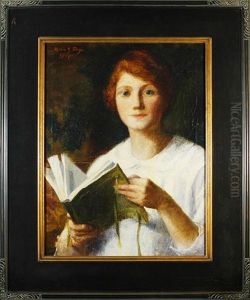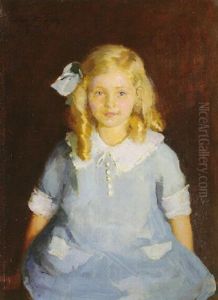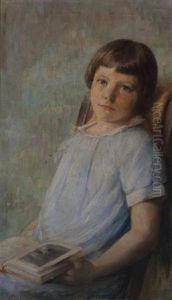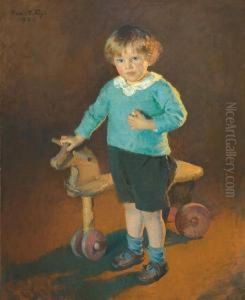Marie Danforth Page Paintings
Marie Danforth Page, born in 1869 and passing away in 1940, was an accomplished American painter known for her remarkable contributions to portrait art and her dedicated involvement in social causes through her artistry. Born into an era where the art world was predominantly male-dominated, Page managed to carve a niche for herself with her distinct style and profound thematic choices that often highlighted intimate, personal moments, and the inner lives of her subjects.
Her education in art began in earnest at the School of the Museum of Fine Arts, Boston, where she was influenced by the teachings of Edmund C. Tarbell and Frank Benson, prominent figures in the American Impressionist movement. This education laid the groundwork for what would become a career characterized by a delicate blend of Impressionist techniques with a strong narrative quality, setting her work apart from that of her contemporaries.
Page's career was marked by her ability to capture the essence of her subjects, which ranged from familial scenes to notable figures of her time. Her portrait of Helen Keller and Anne Sullivan Macy stands out as a testament to her ability to convey complex relationships and profound emotional landscapes. This painting, like many of her works, goes beyond the mere physical likeness to capture the spirit and deeper connection between the subjects.
Beyond her contributions to the arts, Marie Danforth Page was also deeply involved in civic and social issues, using her art as a means to engage with and comment on the societal concerns of her time. She was an active member of the Boston arts community, contributing not just through her paintings but also through her participation in various art organizations, thereby helping to shape the cultural landscape of the city in the early 20th century.
Her legacy, though not as widely recognized as some of her peers, remains significant. Marie Danforth Page's work is a reminder of the power of art to capture the nuances of human experience, to portray the depth of personal relationships, and to make visible the often invisible threads that connect us. Her passing in 1940 marked the end of a career that had enriched American art with its warmth, sensitivity, and a profound sense of humanity.
















